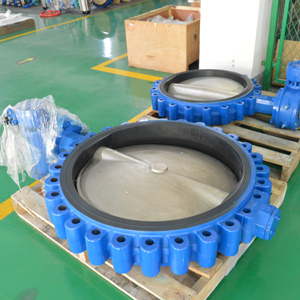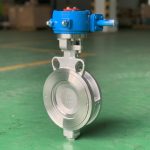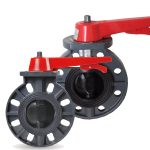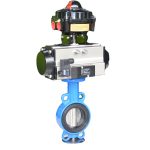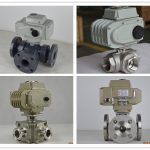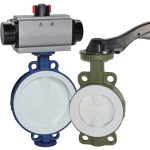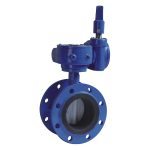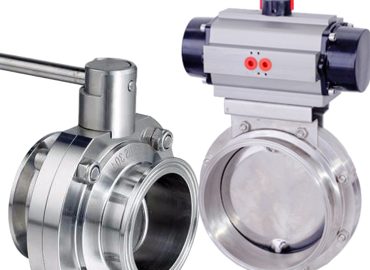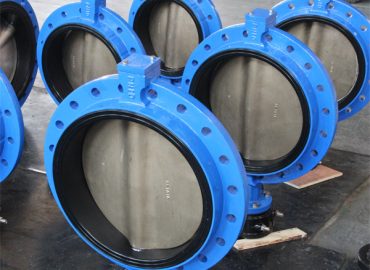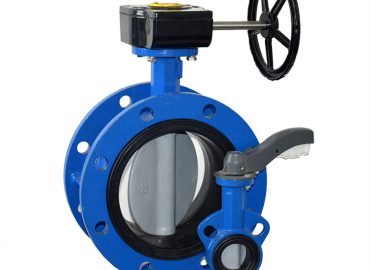Butterfly valves play a crucial role in controlling the flow of fluids and gases in various industries, such as oil and gas, water treatment, and chemical processing. Ensuring the proper functioning of these valves is essential to maintain efficiency and safety within these applications. One common issue that can significantly impact the performance of butterfly valves is leakage. Understanding the causes of valve leakage is critical in order to prevent potential problems and address them promptly. In this blog post, we will explore the most common causes of butterfly valve leakage, offering insights into proper installation, maintenance, and valve selection to ensure optimal performance and reliability.
Introduction
Butterfly valve leakage is a common issue that can have significant consequences on the performance and safety of fluid and gas control systems across various industries. The most common causes of butterfly valve leakage include improper installation, damaged or worn-out components, inadequate sealing, corrosion and erosion, incorrect valve sizing, and manufacturing defects. Improper installation, such as misalignment, incorrect torque, or poor gasket positioning, can lead to leakage and other performance issues. Regular inspection and maintenance are crucial for detecting and addressing worn or damaged components, such as the seat, disc, or stem, which can contribute to leakage. Inadequate sealing, often due to material incompatibility or unsuitable pressure conditions, can also result in leakage; therefore, selecting the appropriate sealing materials and designs is essential. Corrosion and erosion, caused by factors like chemical exposure and temperature fluctuations, can compromise the integrity of the valve and lead to leakage, making it vital to implement preventative measures and select corrosion-resistant materials. Incorrect valve sizing can cause leakage and other operational problems, emphasizing the importance of choosing the right valve size for the specific application. Lastly, manufacturing defects, such as casting errors or machining inaccuracies, can result in leakage, highlighting the need to select high-quality butterfly valves from reputable manufacturers. By understanding these common causes and following industry best practices, proper installation, maintenance, and valve selection can be ensured, leading to optimal butterfly valve performance and reliability.
Brief overview of butterfly valves and their importance in various industries
Butterfly valves are a widely used type of flow control device that find applications across a diverse range of industries. They consist of a circular disc mounted on a rotating stem, which can be turned to regulate the flow of fluids or gases within a pipeline. Butterfly valves are valued for their simplicity, compact design, and cost-effectiveness, making them a popular choice for various industrial processes. Their importance in industries such as oil and gas, water treatment, chemical processing, power generation, and food and beverage cannot be overstated, as they play a critical role in ensuring the safe and efficient operation of fluid handling systems. By providing precise control over the flow of materials, butterfly valves help maintain the integrity of processes, prevent contamination, and contribute to overall system performance. As a result, understanding the function and maintenance of butterfly valves is essential to sustaining the smooth operation of countless industrial applications.

Explanation of the consequences of valve leakage
Valve leakage can have serious consequences on the safety, efficiency, and reliability of fluid and gas control systems within various industries. When a butterfly valve leaks, it fails to properly regulate the flow of materials, which can lead to disruptions in industrial processes and potential damage to downstream equipment. Leakage can also result in the loss of valuable resources, such as chemicals or water, leading to increased operational costs and negative environmental impacts. In some cases, valve leakage can pose significant safety hazards, particularly when dealing with hazardous or high-pressure substances that can cause accidents or contamination if not properly contained. Moreover, persistent leakage can exacerbate wear and tear on valve components, shortening their service life and necessitating more frequent maintenance or replacement. Overall, the consequences of valve leakage underscore the importance of understanding its causes and implementing preventive measures to ensure the optimal performance and longevity of butterfly valves in various applications.
Importance of understanding the causes of leakage to prevent and address issues
Gaining a thorough understanding of the causes of butterfly valve leakage is essential for effectively preventing and addressing issues that may arise in fluid and gas control systems. By identifying the factors that can contribute to leakage, such as improper installation, component wear and tear, inadequate sealing, corrosion and erosion, incorrect valve sizing, and manufacturing defects, operators can implement appropriate preventive measures and maintenance practices to mitigate potential problems. This knowledge also enables prompt identification and remediation of existing leaks, minimizing their impact on system performance, safety, and resource consumption. Ultimately, comprehending the causes of leakage empowers industry professionals to make informed decisions regarding valve selection, installation, and maintenance, ensuring the reliability and efficiency of butterfly valves in various applications and safeguarding the smooth operation of critical industrial processes.
Improper installation
Improper installation is one of the leading causes of butterfly valve leakage and can significantly impact the performance and longevity of these essential flow control devices. Adhering to manufacturer guidelines and industry best practices during installation is crucial to ensure optimal valve function and prevent potential issues. Common installation errors include incorrect alignment, improper torque application, and poor gasket positioning, all of which can contribute to leakage and other operational problems. Misaligned valves can cause uneven wear on components, eventually leading to leaks or even valve failure. Applying inappropriate torque can result in damaged or deformed valve components, compromising their ability to create a tight seal and leading to leakage. Poor gasket positioning or selection can also hinder the sealing capability of the valve, allowing fluid or gas to escape. To prevent leakage due to improper installation, it’s essential to carefully follow installation instructions, use appropriate tools and equipment, and employ trained personnel for the task. Regular inspections and maintenance can help identify and address any installation-related issues before they escalate into more significant problems, ensuring the reliable and efficient operation of butterfly valves in various industrial applications.
Importance of following manufacturer guidelines for installation
Following manufacturer guidelines for butterfly valve installation is of paramount importance to ensure their optimal performance, reliability, and longevity in various industrial applications. These guidelines are specifically designed to address the unique characteristics, materials, and requirements of each valve, taking into account factors such as pressure ratings, temperature ranges, and compatibility with different fluid types. Adhering to these instructions helps prevent common installation errors, such as misalignment, incorrect torque application, or improper gasket positioning, which can lead to leakage, component damage, and operational issues. Furthermore, following the manufacturer’s recommendations ensures that the valve functions as intended, maintaining its sealing capability and flow control accuracy. In addition to safeguarding the efficiency and safety of fluid handling systems, compliance with installation guidelines also preserves the warranty coverage for the valve, providing added protection and peace of mind for operators. Overall, the importance of strictly adhering to manufacturer guidelines for butterfly valve installation cannot be overstated, as it plays a crucial role in preventing potential problems and ensuring the smooth operation of countless industrial processes.
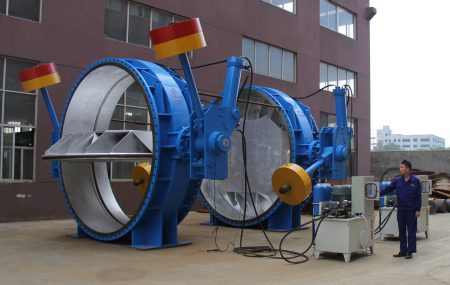
Potential issues arising from incorrect alignment, torque, or gasket positioning
Potential issues arising from incorrect alignment, torque, or gasket positioning during butterfly valve installation can have significant consequences for the performance, safety, and efficiency of fluid control systems. Misalignment of the valve can result in uneven wear on components, such as the disc, seat, and stem, which may compromise their integrity and eventually lead to leakage or valve failure. Applying improper torque to the valve components can cause deformation or damage, hindering the valve’s ability to create a tight seal and contributing to leakage. Moreover, excessive torque can strain the stem, increasing the risk of breakage and subsequent system failures. Poor gasket positioning or selection can also negatively impact the valve’s sealing capability, allowing fluid or gas to escape and leading to operational inefficiencies or contamination. These issues not only disrupt the smooth functioning of industrial processes but also necessitate more frequent maintenance or component replacement, increasing operational costs and downtime. Therefore, it is crucial to pay close attention to alignment, torque, and gasket positioning during valve installation to prevent potential problems and ensure the optimal performance, reliability, and longevity of butterfly valves in various applications.
Tips for ensuring proper installation
Ensuring proper installation of butterfly valves is crucial to their optimal performance, reliability, and longevity in various industrial applications. To achieve this, several tips can be followed. First, always adhere to the manufacturer’s guidelines and recommendations, as these provide detailed instructions tailored to the specific valve type, materials, and requirements. Second, employ trained and experienced personnel for the installation process, as their expertise can help prevent common errors and ensure that the valve functions as intended. Third, use appropriate tools and equipment during installation, such as torque wrenches and alignment tools, to facilitate precise positioning and tightening of components. Fourth, verify the compatibility of the valve with the intended fluid or gas, as well as the system’s pressure and temperature ranges, to prevent potential damage or leakage. Fifth, inspect the valve and its components prior to installation, checking for any signs of damage, wear, or manufacturing defects that may affect its performance. Finally, establish a regular inspection and maintenance schedule to promptly identify and address any installation-related issues before they escalate into more significant problems. By following these tips, operators can help ensure the proper installation of butterfly valves, contributing to the smooth operation and success of countless industrial processes.
Damaged or worn-out components
Damaged or worn-out components in butterfly valves can significantly impact their overall performance, efficiency, and reliability within various industrial applications. Over time, factors such as corrosion, erosion, fatigue, and general wear and tear can degrade essential valve components, including the disc, seat, stem, and sealing elements. As these parts lose their integrity and functionality, the valve’s ability to regulate fluid or gas flow and maintain a tight seal can be compromised, leading to leakage, operational inefficiencies, and even system failures. Moreover, damaged or worn-out components can increase the risk of accidents, particularly when dealing with high-pressure or hazardous substances that require precise control and containment.
To prevent issues arising from component degradation, it’s crucial to implement regular inspection and maintenance routines that help identify signs of wear, damage, or potential failure. This proactive approach allows for the timely replacement or repair of affected parts, ensuring the continued safe and efficient operation of the butterfly valve. Additionally, selecting high-quality materials and components that are resistant to corrosion and wear can further extend the service life of the valve and reduce the likelihood of component-related problems.
In conclusion, addressing damaged or worn-out components is essential for maintaining the optimal performance and longevity of butterfly valves in diverse applications. By investing in routine maintenance, using durable materials, and replacing faulty parts promptly, operators can ensure the reliable and efficient functioning of these critical flow control devices, ultimately contributing to the success and safety of countless industrial processes.
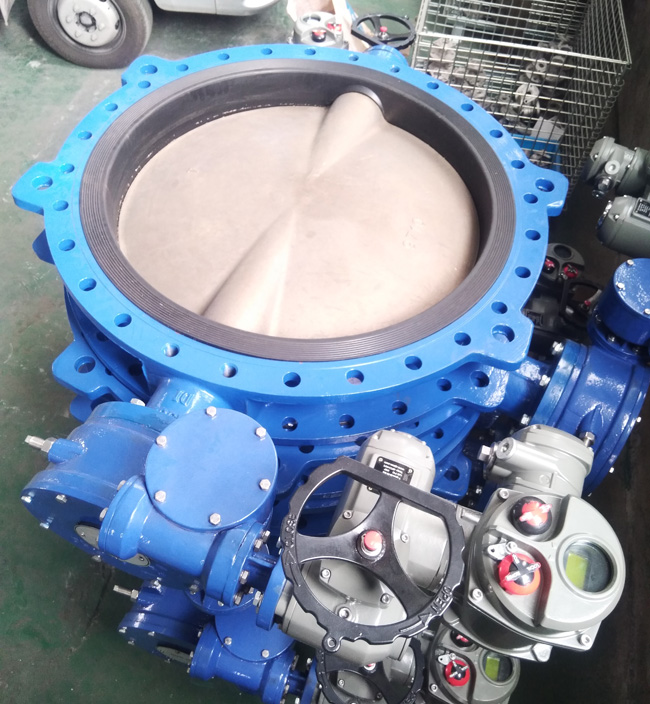
Discussion of common wear and tear on valve components
Common wear and tear on butterfly valve components can significantly impact their functionality, efficiency, and service life within various industrial applications. Factors such as friction, corrosion, erosion, and temperature fluctuations can contribute to the gradual degradation of essential valve components, including the disc, seat, stem, and sealing elements. For instance, repeated opening and closing of the valve can cause friction between the disc and seat, leading to material wear and a reduction in sealing capability. Corrosion, resulting from exposure to aggressive fluids or environments, can weaken the valve’s structural integrity, while erosion from abrasive particles in the fluid can lead to material loss and eventual failure. Additionally, constant exposure to extreme temperature fluctuations can cause components to expand and contract, resulting in fatigue and potential cracks. These wear-related issues can compromise the valve’s ability to regulate flow and maintain a tight seal, leading to leakage, inefficiencies, and possible system failures. To mitigate the effects of wear and tear on valve components, it is crucial to implement regular inspection and maintenance routines, select high-quality materials with appropriate resistance properties, and ensure proper installation and operation practices, ultimately contributing to the reliable and effective functioning of butterfly valves in diverse applications.
How damaged components, such as the seat, disc, or stem, can lead to leakage
Damaged components within butterfly valves, such as the seat, disc, or stem, can significantly contribute to leakage, impacting the efficiency, safety, and reliability of fluid control systems in various industrial applications. The seat plays a crucial role in creating a tight seal when the valve is closed, and any damage or wear on its surface can hinder its sealing capability, allowing fluid or gas to escape. Similarly, a damaged or worn disc may not align correctly with the seat, preventing the formation of an effective seal and leading to leakage. The stem, which connects the disc to the actuator, is responsible for transmitting the torque required to open and close the valve. If the stem is compromised by corrosion, fatigue, or other forms of damage, it may not operate smoothly or accurately, resulting in misalignment between the disc and seat, and ultimately causing leakage. To prevent such issues, it is essential to conduct regular inspections and maintenance of butterfly valves, promptly addressing any signs of wear or damage to critical components. By ensuring the proper functioning and integrity of the seat, disc, and stem, operators can minimize leakage risks and maintain the optimal performance and safety of fluid control systems.
Importance of regular inspection and maintenance for early detection of component damage
The importance of regular inspection and maintenance for early detection of component damage in butterfly valves cannot be overstated, as it plays a vital role in ensuring their optimal performance, safety, and longevity in various industrial applications. By conducting routine checks and following a well-planned maintenance schedule, operators can promptly identify signs of wear, corrosion, fatigue, or other damage affecting critical components such as the seat, disc, or stem. Early detection of potential issues allows for timely intervention, repair, or replacement of affected parts, preventing more severe problems from arising, such as leakage, operational inefficiencies, or system failures. Moreover, regular maintenance helps to ensure that the valve functions as intended, maintaining its sealing capability and flow control accuracy under different operating conditions. In addition to safeguarding the efficiency and safety of fluid handling systems, proactive inspection and maintenance practices also contribute to reducing downtime and operational costs associated with unexpected component failures or system disruptions. Ultimately, prioritizing regular inspection and maintenance of butterfly valves is essential for preserving their reliable and effective functioning, supporting the success and sustainability of countless industrial processes.
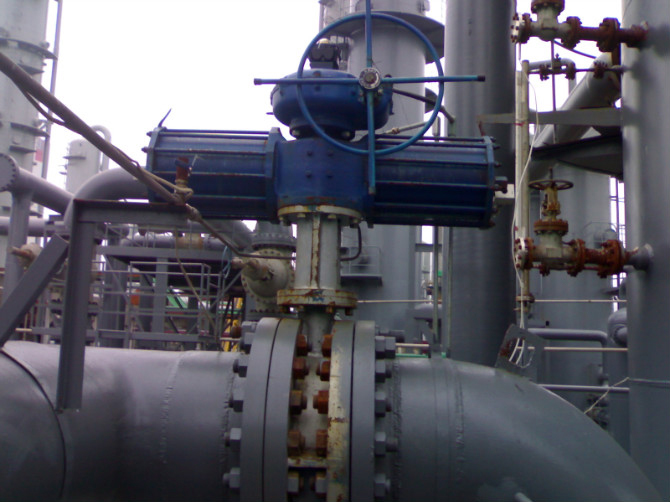
Inadequate sealing
Inadequate sealing in butterfly valves can have a significant impact on the performance, safety, and efficiency of fluid control systems across various industrial applications. The primary function of a butterfly valve is to regulate flow and create a tight seal when closed, preventing the leakage of fluid or gas. However, several factors can contribute to insufficient sealing, such as damaged or worn components like the disc, seat, or stem, improper installation or alignment, inadequate torque application, or the use of incorrect gasket materials. Inadequate sealing can lead to a range of issues, including leakage, contamination, operational inefficiencies, increased maintenance requirements, and even system failures, posing potential safety hazards and negatively affecting the overall productivity of industrial processes.
To address and prevent inadequate sealing in butterfly valves, it is essential to adopt a proactive approach that includes regular inspection and maintenance routines, adherence to manufacturer guidelines and recommendations, proper installation practices, and the use of high-quality, compatible components and materials. By ensuring the integrity and functionality of the disc, seat, stem, and other sealing elements, operators can maintain the valve’s sealing capability and flow control accuracy under different operating conditions. Furthermore, addressing sealing issues in a timely manner can help minimize downtime, reduce operational costs associated with component failures or system disruptions, and ultimately contribute to the reliable and effective functioning of fluid control systems in diverse industries. In conclusion, recognizing the importance of adequate sealing in butterfly valves and taking the necessary steps to ensure its effectiveness is crucial for the success and sustainability of countless industrial processes.
Explanation of how the sealing mechanism works in butterfly valves
The sealing mechanism in butterfly valves plays a critical role in regulating fluid flow and maintaining leak-free performance across various industrial applications. Butterfly valves consist of a circular disc mounted on a rotating stem, which is actuated either manually or automatically to control the flow of fluid or gas within a pipeline. When the valve is in the closed position, the disc aligns perpendicular to the flow, effectively blocking it. The sealing mechanism comes into play at this point, as the outer edge of the disc comes into contact with the seat – a flexible and resilient material that lines the inner diameter of the valve body. The seat’s elasticity allows it to conform to the shape of the disc, creating a tight seal that prevents fluid or gas from leaking past the closed valve. The effectiveness of this sealing mechanism relies heavily on the compatibility and integrity of both the disc and seat materials, as well as the proper alignment and torque application during valve operation. By understanding and maintaining the sealing mechanism in butterfly valves, operators can ensure optimal flow control, leak-free performance, and overall reliability in diverse industrial processes.
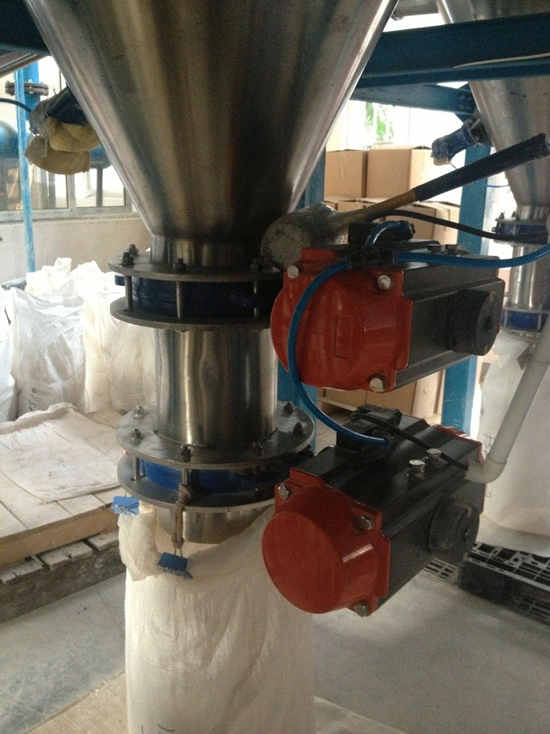
Factors that can contribute to inadequate sealing, such as material compatibility and pressure conditions
Inadequate sealing in butterfly valves can result from various factors, including material compatibility and pressure conditions, which can significantly affect the valve’s performance, safety, and efficiency in fluid control systems across diverse industrial applications. Material compatibility between the disc, seat, and gasket plays a crucial role in ensuring effective sealing, as incompatible materials may not provide the appropriate level of elasticity or resistance against specific fluids, temperatures, or pressures. In such cases, components may degrade rapidly, lose their sealing capability, and ultimately lead to leakage. Additionally, pressure conditions within the system can also impact the sealing performance of butterfly valves. High-pressure environments may cause the seat to deform or extrude, compromising the seal’s integrity and allowing fluid or gas to escape. On the other hand, low-pressure conditions might not generate enough force to achieve a tight seal between the disc and seat, resulting in inadequate sealing. To mitigate these issues, it is essential to carefully select compatible materials for the valve components based on the specific application requirements and operating conditions. Furthermore, regular inspection and maintenance can help identify potential sealing issues early on, allowing operators to address them promptly and ensure the continued optimal performance and safety of fluid control systems.
Recommendations for selecting appropriate sealing materials and designs
Selecting appropriate sealing materials and designs is crucial for ensuring optimal performance, reliability, and longevity of butterfly valves in various industrial applications. To make informed choices, operators should consider factors such as the type of fluid being handled, operating temperature and pressure ranges, chemical compatibility, and abrasion resistance. Firstly, it is essential to choose a seat material that is compatible with the specific fluid to prevent premature degradation, swelling, or shrinkage. Common seat materials include elastomers like EPDM, NBR, and Viton, each offering unique resistance properties against different chemicals, temperatures, and pressures.
Moreover, the disc material should also be carefully selected based on its compatibility with the fluid and environmental conditions, considering options like stainless steel, ductile iron, or other alloys. Gasket materials, responsible for creating a seal between the valve body and connecting flanges, should also be chosen based on their ability to withstand the system’s temperature, pressure, and chemical exposure.
Furthermore, selecting an appropriate sealing design can help enhance the valve’s sealing performance. For instance, resilient-seated butterfly valves provide excellent sealing capabilities across a wide range of applications, while high-performance butterfly valves with a double-offset design can accommodate higher pressures and temperatures. By considering these factors and recommendations, operators can select the most suitable sealing materials and designs for their specific applications, ensuring reliable and efficient flow control while minimizing the risk of leakage and component failure.
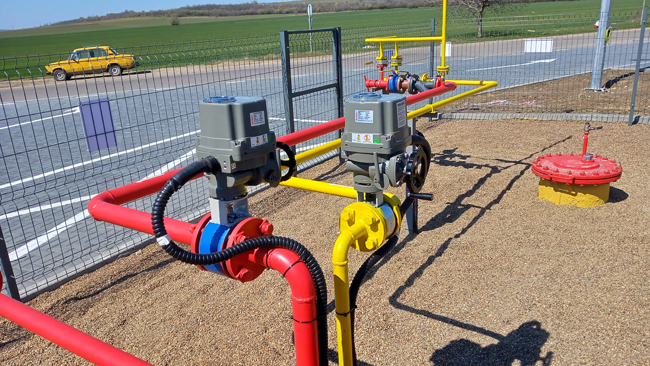
Corrosion and erosion
Corrosion and erosion are two detrimental processes that can significantly impact the performance, longevity, and safety of various components and systems in industrial applications. Corrosion refers to the chemical or electrochemical reaction between a material, typically metal, and its environment, leading to the deterioration or degradation of the material. Common causes of corrosion include exposure to moisture, chemicals, or high temperatures, which can result in the formation of rust, pitting, or other forms of material loss. Erosion, on the other hand, involves the gradual removal of material from a surface due to mechanical wear caused by the abrasive action of fluids, particles, or gases. Erosion can occur in various forms, such as cavitation, impingement, or abrasion, and is often exacerbated by factors like high flow velocities, turbulence, or the presence of solid particles within the fluid.
Both corrosion and erosion can have severe consequences for industrial systems and equipment, resulting in reduced efficiency, increased maintenance requirements, component failure, and even catastrophic system breakdowns. To mitigate the risks associated with these processes, it is essential to adopt proactive strategies, such as material selection, protective coatings, and regular inspection and maintenance routines. Choosing materials with inherent corrosion resistance or compatibility with the specific operating environment can help minimize the potential for corrosive damage, while the application of protective coatings or linings can further enhance the material’s resilience against corrosive and erosive forces. Regular inspection and maintenance of components at risk of corrosion or erosion can facilitate early detection of potential issues, allowing operators to take timely action to repair or replace affected parts before more severe problems arise. Ultimately, understanding and addressing the challenges posed by corrosion and erosion is critical for maintaining the reliability, efficiency, and safety of industrial systems across a wide range of applications.
Explanation of how corrosion and erosion can cause butterfly valve leakage
Corrosion and erosion can significantly contribute to butterfly valve leakage, impacting the efficiency and reliability of fluid control systems across various industrial applications. As corrosion causes the gradual deterioration or degradation of metal components, it can affect the integrity of crucial valve parts such as the disc, seat, or stem. This may result in the formation of pits, cracks, or uneven surfaces, which can compromise the sealing capability of the valve when it is in the closed position. Similarly, erosion caused by the abrasive action of fluids, particles, or gases can lead to material loss, altering the shape or surface finish of the valve components. Consequently, this may prevent the disc and seat from forming a tight seal, allowing fluid or gas to leak past the closed valve. To mitigate the risks associated with corrosion and erosion, it is essential to select appropriate materials, apply protective coatings or linings, and conduct regular inspection and maintenance of butterfly valves. By addressing these issues proactively, operators can ensure optimal flow control and leak-free performance, maintaining the safety and efficiency of industrial processes.
Common factors contributing to corrosion, such as chemical exposure and temperature fluctuations
Several common factors contribute to corrosion, significantly impacting the performance and durability of industrial equipment and systems. Chemical exposure is a primary contributor, as materials, particularly metals, can react with corrosive substances like acids, bases, or salts present in the operating environment. These reactions can lead to the formation of rust, pitting, or other types of material degradation, compromising the structural integrity of the components. Temperature fluctuations also play a crucial role in accelerating corrosion rates, as higher temperatures can increase the chemical reactivity of materials and promote the formation of corrosive products. Furthermore, temperature changes can cause thermal expansion and contraction, resulting in mechanical stresses that may exacerbate the corrosion process. Other factors, such as moisture, oxygen levels, and the presence of galvanic couples, can also influence the rate and severity of corrosion. To minimize the risks associated with these factors, it is essential to carefully select materials with inherent corrosion resistance, apply protective coatings or treatments, and implement appropriate maintenance practices. By addressing these contributing factors proactively, operators can enhance the longevity and reliability of their equipment, ensuring the safety and efficiency of industrial processes.
Preventative measures to reduce the risk of corrosion and erosion
Preventative measures play a vital role in reducing the risk of corrosion and erosion, ensuring the longevity, reliability, and safety of industrial equipment and systems. Material selection is a crucial step in mitigating corrosion risks, as choosing materials with inherent corrosion resistance or compatibility with the operating environment can significantly minimize chemical reactions and degradation. For instance, stainless steel, bronze, or plastic materials may be suitable options depending on the specific application requirements. Protective coatings or treatments, such as paints, galvanizing, or anodizing, can be applied to susceptible components to create a barrier against corrosive substances and shield the underlying material from environmental factors.
In the case of erosion, controlling flow velocities, reducing turbulence, and minimizing the presence of abrasive particles within the fluid can help decrease the rate of material wear. Installing wear-resistant liners or selecting materials with high abrasion resistance, such as tungsten carbide or ceramic, can further enhance the durability of components exposed to erosive forces. Regular inspection and maintenance practices, including cleaning, lubrication, and timely replacement of worn parts, are essential for detecting and addressing potential corrosion and erosion issues before they escalate into more severe problems. By implementing these preventative measures, operators can effectively manage the risks associated with corrosion and erosion, maintaining the efficiency and safety of industrial processes.
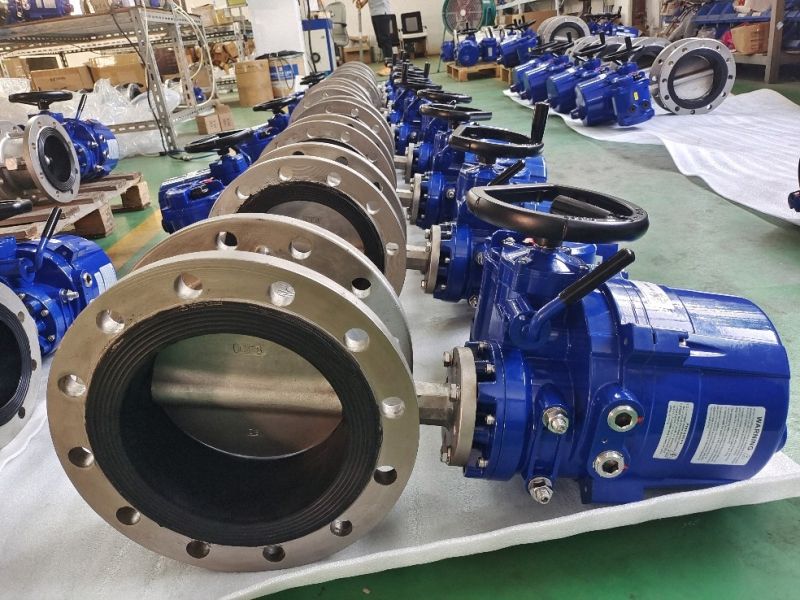
Incorrect valve sizing
Incorrect valve sizing is a common issue that can significantly impact the performance, efficiency, and longevity of control valves in various industrial applications. Proper valve sizing is crucial to ensure optimal flow control, pressure regulation, and system stability, as well as to minimize the risk of cavitation, noise, and premature wear. When a valve is undersized, it may not provide sufficient flow capacity, resulting in inadequate process control, reduced system efficiency, or even the inability to meet operational demands. This can lead to increased energy consumption, production losses, or potential safety hazards, as the valve struggles to maintain the desired flow rate or pressure drop across the system.
Conversely, an oversized valve can create its own set of challenges, such as poor flow control, increased susceptibility to cavitation, and excessive wear on internal components. When a valve is too large for its intended application, it may operate predominantly in a partially open position, which can result in limited control range, unstable flow characteristics, and increased sensitivity to pressure fluctuations. Moreover, oversized valves can exacerbate the risk of cavitation, a phenomenon wherein rapid changes in fluid pressure cause the formation and collapse of vapor bubbles, leading to noise, vibration, and potential damage to the valve components. The increased wear and tear associated with improper valve sizing can also contribute to more frequent maintenance requirements, reduced component life, and higher total cost of ownership.
To avoid the pitfalls of incorrect valve sizing, it is essential to conduct thorough engineering analyses during the design and selection process, taking into account factors such as flow rate, pressure drop, temperature, fluid properties, and specific application requirements. By selecting the right valve size for a given application, operators can optimize flow control performance, maximize system efficiency, and ensure the long-term reliability and safety of their equipment.
Importance of selecting the appropriate valve size for the specific application
Selecting the appropriate valve size for a specific application is of paramount importance to ensure optimal performance, efficiency, and longevity of control valves in industrial systems. The correct valve size directly impacts flow control accuracy, pressure regulation, and system stability, while minimizing potential issues such as cavitation, noise, and premature wear. By choosing the right valve size, operators can achieve precise process control, maintain desired flow rates and pressure drops, and reduce energy consumption, ultimately leading to increased productivity and cost savings. Furthermore, selecting the appropriate valve size contributes to enhanced safety by reducing the risk of equipment failure or hazardous conditions resulting from improper flow control. To determine the ideal valve size for a given application, it is crucial to conduct a thorough engineering analysis, taking into account factors such as flow rate, pressure drop, temperature, fluid properties, and specific operational requirements. By prioritizing proper valve sizing, operators can optimize their systems’ performance and reliability, ensuring the long-term success and safety of their industrial processes.
How incorrect valve sizing can lead to leakage and other performance issues
Incorrect valve sizing can lead to leakage and various performance issues, negatively impacting the efficiency, reliability, and safety of industrial systems. When a valve is improperly sized, it may not provide adequate flow control or pressure regulation, resulting in inconsistent process conditions and potential system instability. Inadequate sealing between the valve components, often caused by an undersized or oversized valve, can allow fluid or gas to leak past the closed valve, leading to reduced efficiency, increased energy consumption, and potential environmental or safety hazards. Additionally, incorrect valve sizing can exacerbate the risk of cavitation, a phenomenon where rapid changes in fluid pressure cause the formation and collapse of vapor bubbles. Cavitation can result in excessive noise, vibration, and damage to the valve components, further contributing to leakage and premature wear. Ultimately, improper valve sizing can increase maintenance requirements, reduce component life, and raise the total cost of ownership for the affected system. To avoid these issues, it is crucial to conduct a thorough engineering analysis during the design and selection process, ensuring the appropriate valve size is chosen for the specific application and operational requirements.
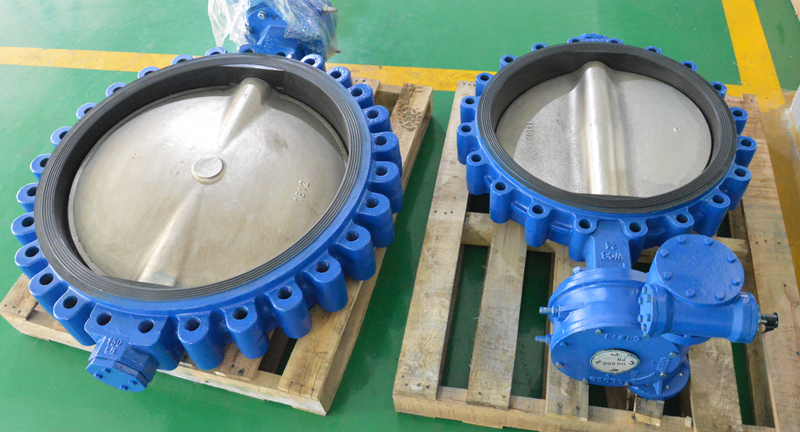
Guidelines for determining the correct valve size
Determining the correct valve size is essential for optimizing the performance, efficiency, and reliability of industrial systems. To ensure the appropriate valve size is selected for a specific application, operators should follow several guidelines during the design and selection process. First, gather comprehensive data on the system’s requirements, including flow rate, pressure drop, temperature, fluid properties, and any specific operational conditions. This information is crucial for accurately assessing the valve’s performance under various scenarios and selecting a valve that meets the application’s needs. Second, utilize established sizing equations and methodologies, such as the Cv (Valve Flow Coefficient) method or industry-specific sizing standards, to calculate the required valve capacity and translate it into an appropriate size. These methods take into account factors like fluid flow rate, pressure drop, and fluid properties to ensure accurate valve sizing. Third, consider the valve type, materials, and construction, as different valve designs and materials may exhibit varying flow characteristics, pressure handling capabilities, and corrosion resistance. Finally, consult with valve manufacturers or engineering experts to verify your sizing calculations and receive guidance on selecting the most suitable valve for your application. By following these guidelines and prioritizing proper valve sizing, operators can effectively optimize their systems’ performance, ensuring the long-term success and safety of their industrial processes.
Manufacturing defects
Manufacturing defects are imperfections or irregularities in a product that result from errors or inconsistencies during the production process. These defects can significantly impact the quality, performance, and safety of the product, potentially leading to reduced functionality, premature failure, or even hazardous conditions for the end-users. Manufacturing defects can arise from various sources, such as material flaws, design oversights, equipment malfunctions, human error, or inadequate quality control measures. Some common examples of manufacturing defects include improper material composition, surface irregularities, structural weaknesses, faulty welds, and incorrect assembly.
The consequences of manufacturing defects can range from minor cosmetic issues to severe operational failures, depending on the nature and extent of the defect. In some cases, a manufacturing defect may not immediately manifest itself, remaining hidden until the product is subjected to certain conditions or stresses that reveal the underlying issue. This can result in unexpected failures, costly downtime, or damage to other system components. In more extreme cases, manufacturing defects can pose significant safety risks, potentially causing accidents, injuries, or environmental hazards if not detected and addressed promptly.
To minimize the occurrence of manufacturing defects, manufacturers must implement stringent quality control procedures, including regular inspections, testing, and process monitoring, to ensure that products meet the specified design requirements and performance standards. Additionally, investing in employee training, advanced manufacturing technologies, and continuous process improvement can help to reduce the likelihood of errors and inconsistencies in the production process. In the event that a manufacturing defect is identified, it is essential for manufacturers to take prompt corrective action, such as repairing or replacing the affected product, to mitigate potential risks and maintain customer satisfaction. By proactively addressing manufacturing defects, companies can enhance the quality and reliability of their products, safeguarding their reputation and ensuring the long-term success of their business.
Overview of the potential impact of manufacturing defects on butterfly valve performance
Manufacturing defects can have a significant impact on the performance, reliability, and safety of butterfly valves, which are widely used for flow control and regulation in various industrial applications. Defects such as material flaws, improper assembly, or faulty welds can compromise the valve’s sealing capability, leading to leakage, reduced flow control accuracy, and increased wear on internal components. Furthermore, manufacturing defects may affect the valve’s structural integrity, making it more susceptible to deformation or failure under operational stresses, such as pressure or temperature fluctuations. In some cases, these defects can also result in increased torque requirements for valve actuation, negatively affecting the efficiency and responsiveness of the valve control system. Ultimately, manufacturing defects in butterfly valves can lead to decreased system performance, higher maintenance costs, and potential safety risks if not promptly identified and addressed. To ensure the optimal performance and longevity of butterfly valves, it is crucial for manufacturers to implement rigorous quality control measures and adhere to industry standards throughout the production process, minimizing the likelihood of defects and safeguarding the overall integrity of the valve assembly.
Common manufacturing defects that can lead to leakage, such as casting errors or machining inaccuracies
Common manufacturing defects that can lead to leakage in industrial components, such as valves and piping systems, often stem from casting errors or machining inaccuracies during the production process. Casting errors, such as porosity, inclusions, or cold shuts, can introduce voids, impurities, or weak points in the material, compromising the structural integrity and sealing capability of the component. These flaws may result in leak paths or cause the component to fail under pressure, leading to fluid or gas leaks and reduced system performance. Similarly, machining inaccuracies, such as improper tolerances, uneven surface finishes, or misaligned dimensions, can negatively impact the fit and sealing effectiveness between mating surfaces of components. When parts do not align or mate correctly, gaps or irregularities may form, allowing fluid or gas to escape and causing leakage. In both cases, these manufacturing defects can reduce the efficiency, reliability, and safety of the affected system, necessitating more frequent maintenance, repairs, or replacements. To minimize the occurrence of such defects and ensure the optimal performance of industrial components, manufacturers should adhere to stringent quality control measures, invest in advanced production technologies, and continuously improve their processes to eliminate errors and inconsistencies.
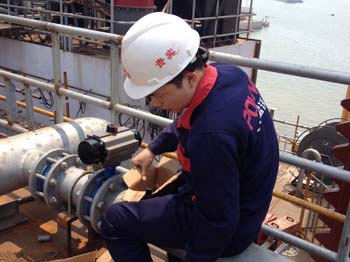
Tips for selecting high-quality butterfly valves from reputable manufacturers
Selecting high-quality butterfly valves from reputable manufacturers is crucial for optimizing the performance, reliability, and safety of industrial systems. To ensure you choose the best butterfly valves for your application, consider the following tips:
- Research and identify well-established manufacturers with a proven track record of producing high-quality butterfly valves. Look for companies that have been in the industry for a significant amount of time and have a strong reputation for delivering reliable, durable products.
- Prioritize manufacturers that adhere to strict quality control standards and hold relevant certifications, such as ISO 9001 or API (American Petroleum Institute) standards. These certifications indicate that the manufacturer follows established industry guidelines and maintains a commitment to producing high-quality products.
- Evaluate the materials and construction of the butterfly valves, ensuring they are suitable for your specific application and operating conditions. Select valves made from corrosion-resistant materials, such as stainless steel or specialized alloys, and opt for designs that provide optimal sealing performance, minimal leakage, and extended service life.
- Consider the manufacturer’s technical support and customer service capabilities. A reputable manufacturer should offer comprehensive documentation, engineering assistance, and after-sales support to help customers select, install, and maintain their butterfly valves effectively.
- Consult with industry peers, read reviews, or seek recommendations from professionals with experience using butterfly valves from various manufacturers. This feedback can provide valuable insights into the performance, durability, and reliability of different products and help you make an informed decision.
By following these tips and prioritizing high-quality butterfly valves from reputable manufacturers, you can effectively optimize your system’s performance and ensure the long-term success and safety of your industrial processes.
Conclusion
Butterfly valves play a crucial role in controlling and regulating fluid flow in various industrial applications. However, despite their widespread use, butterfly valve leakage remains a common concern that can negatively impact system performance, efficiency, and safety. Understanding the most common causes of butterfly valve leakage can help operators identify potential issues and implement appropriate measures to prevent or address them.
- Manufacturing defects: As discussed earlier, manufacturing defects such as casting errors or machining inaccuracies can compromise the sealing and structural integrity of butterfly valves, leading to leakage. Ensuring that you select high-quality butterfly valves from reputable manufacturers with stringent quality control measures in place can significantly reduce the likelihood of encountering such defects.
- Incorrect valve sizing or selection: Choosing the wrong size or type of butterfly valve for a specific application can result in inadequate sealing, increased wear, and leakage. Properly sizing and selecting the appropriate valve for your system’s requirements, including flow rate, pressure drop, and fluid properties, can help prevent these issues and optimize valve performance.
- Worn or damaged components: Over time, the internal components of butterfly valves, such as seals, seats, or discs, can wear or become damaged due to operational stresses, corrosion, or abrasive media. Regular inspection and timely replacement of worn or damaged components can help maintain proper sealing performance and prevent leakage.
- Improper installation or maintenance: Incorrect installation or insufficient maintenance practices can also contribute to butterfly valve leakage. Ensuring that valves are installed according to manufacturer guidelines and implementing a routine maintenance program, including regular inspections, cleaning, and component replacement when necessary, can help maintain optimal valve performance and minimize leakage.
- Actuator misalignment or malfunction: The actuator, which controls the opening and closing of the butterfly valve, can also be a source of leakage if it is misaligned or malfunctioning. Regularly inspecting, calibrating, and maintaining the actuator can help prevent these issues and ensure proper valve operation.
In conclusion, identifying and addressing the most common causes of pneumatic butterfly valve leakage is essential for maintaining the efficiency, reliability, and safety of industrial systems. By selecting high-quality butterfly valves from reputable manufacturers, properly sizing and selecting the appropriate valve for your application, and implementing a proactive maintenance program, you can effectively minimize leakage and ensure the long-term success of your system’s flow control processes.
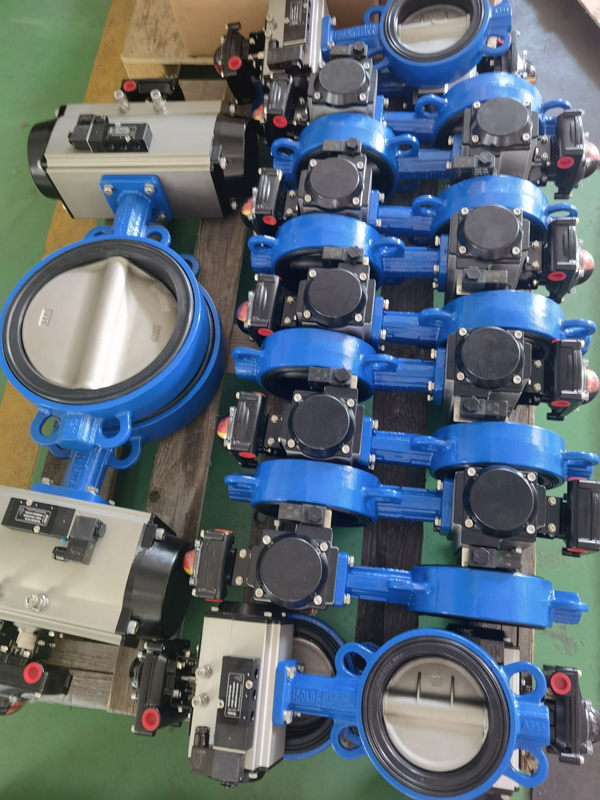
Recap of the most common causes of butterfly valve leakage
In summary, the most common causes of butterfly valve leakage include manufacturing defects, incorrect valve sizing or selection, worn or damaged components, improper installation or maintenance, and actuator misalignment or malfunction. By understanding these potential issues, operators can take proactive measures to prevent and address leakage in their industrial systems. Ensuring the selection of high-quality butterfly valves from reputable manufacturers, proper sizing and valve selection, regular inspection of components, adherence to installation guidelines, and maintaining actuators can significantly minimize leakage, optimizing system performance and ensuring long-term reliability and safety.
Emphasis on the importance of proper installation, maintenance, and valve selection to prevent leakage
The importance of proper installation, maintenance, and valve selection cannot be overstated when it comes to preventing butterfly valve leakage in industrial systems. These factors play a crucial role in ensuring the optimal performance, reliability, and safety of the system. Selecting the appropriate valve for your specific application, taking into account factors such as flow rate, pressure drop, and fluid properties, can significantly reduce the likelihood of inadequate sealing and leakage. Additionally, adhering to manufacturer guidelines during installation helps ensure that the valve functions effectively and maintains its structural integrity. A proactive maintenance program, including regular inspections, cleaning, and timely replacement of worn or damaged components, is essential for preserving the valve’s sealing performance and preventing leakage. By emphasizing the importance of these aspects, operators can minimize the risk of butterfly valve leakage, enhance system efficiency, and safeguard the long-term success of their industrial processes.
Encouragement to consult with experts and follow industry best practices for optimal valve performance
It is highly recommended that operators consult with experts and follow industry best practices to achieve optimal valve performance in their industrial systems. Engaging with experienced professionals who possess in-depth knowledge of butterfly valves, their applications, and potential challenges can provide valuable insights and guidance when selecting, installing, and maintaining these essential flow control components. By adhering to established industry standards and best practices, operators can ensure that they are making informed decisions, optimizing valve performance, and minimizing the risk of leakage or other operational issues. Furthermore, staying up-to-date with the latest advancements in valve technology and design can help operators identify and implement innovative solutions that enhance system efficiency, reliability, and safety. In essence, investing time and effort into consulting with experts and following industry best practices is a smart approach to maximizing the long-term success of your industrial processes and safeguarding the integrity of your flow control systems.


